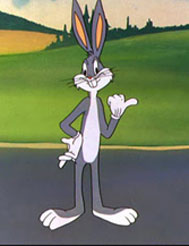
Happy National Poetry Month! There are so many everyday ways to celebrate poetry, including reading one poem a day with your kids, celebrating Poem in Your Pocket Day on April 27, writing poems in chalk on the sidewalk for all to see, and exploring different forms of poetry with your children. The National Poetry Month website at Poets.org offers 30 ways to celebrate with your kids and embrace your more literary side all month long.
Why Celebrate Poetry?
via GIPHY
“Poetry is a little package of words that crystallizes thought,” Charles Ghigna, AKA Father Goose, explains. “Poetry helps children become better readers and writers by concentrating their thoughts and emotions and introducing them to metaphor, irony, symbols, and other literary devices.” Ghigna is the author of more than 100 books and more than 5000 poems for kids and their parents.
He is also the author of the book Haiku: The Travelers of Eternity, and is currently working on a book titled Haiku for Kids to introduce children to its uncomplicated and beautiful form. Haiku, one of the easiest forms of poetry to write and understand, is an ideal form to teach young children. It has the least requirements of any structured form of poetry: all you need to know is how to count up to seven!
“Haiku is a highly understated and concentrated form of poetry,” Ghigna explains. “It exemplifies the ‘show, don’t tell’ technique and uses images to suggest more than is said.”
What Is Haiku?
by Charles Ghigna
Haiku is a poem
of seventeen syllables
with only three lines.
The first line has five.
The second line has seven.
The third line has five.
Each haiku describes
a fleeting moment in Time,
a glimpse of Nature.
How to Write a Haiku with Your Kids in Seven Simple Steps
1.) Pick a subject: “Often focusing on images from nature, haiku emphasizes simplicity, intensity, and directness of expression,” according to Poets.org, the website of the Academy of American Poets.
2.) Get the right tense and tone: Haiku is almost always written in the moment, about the moment. In a way, children naturally speak in haiku. They communicate sensory observations in short sound bites to share their experience of the world.
3.) Build the structure: Modern haiku traditionally has 3 lines. The first has 5 syllables, the second has 7, and the third has 5. In its more complex poetic form, the third line often presents a contrast or unexpected ending or it simply ties the meaning of the poem together.
4.) Remember, haiku is often intended to be read in one breath.
5.) Find a topic: “Write what you know”, the standard direction to all writers starting out, is the perfect advice for new haiku poets. Here are some idea starters:
- Family members
- Weather
- Seasons
- Favorite toy
- Pets
- Favorite foods
- Things that are yucky
- Things that make you happy or sad
- Things that make you laugh
Or write haiku about this wood block print of Mount Fuji. “Thirty-six Views of Mount Fuji is a series of landscape prints created by the Japanese ukiyo-e artist Hokusai (1760–1849). The series depicts Mount Fuji from different locations and in various seasons and weather conditions,” according to Yamachem, who posted it on OpenClipArt.org.
While adults and even older kids get writers’ block, younger children rarely run out of ideas once they get started!
6.) Once you have your topic, ask your child say something in one breath or sentence about it. Pare it down to 5 syllables. Have them elaborate about it in the second line and pare it to 7 syllables. Finally, have your child sum up his or her feelings about the topic in the last line and pare it to 5 syllables.
7.) Lastly, give it a simple title. Post a sample of your child’s haiku poetry along with his or her age in the comments below to share your poems with other readers in our community!
via GIPHY
Find More Ways to Celebrate National Poetry Month
- Take some tips from homeschooling parents for things to do after school or on the weekends with your kids
- Take this quiz to see how well you know your poetry terms.
- Do a poem dance!
- Print out a fill-in-the-blank poem for your kids.





